Product release notes are an essential, yet often overlooked part of the SaaS communication strategy.
They alert users to changes and updates to your products, which means they play an important role in informing your users, but also supporting your marketing, sales, and customer service efforts.
In this article, we’re going to go over the basics of what release notes are, why they’re important, and how they’re made and distributed.
Let’s start with a proper definition.
What Are Product Release Notes
Product release notes are an important type of technical documentation used by SaaS companies and other tech businesses.
Their purpose is to communicate with end users that the product has undergone some changes for the better and now offers more in terms of features and user experience.
They don’t have a set format, and every company will have its own way of announcing products, new features, or updates.
For instance, here’s Asana’s release note page. It features monthly roundups of updates for the work management platform in plain text, as well as a handy short video.
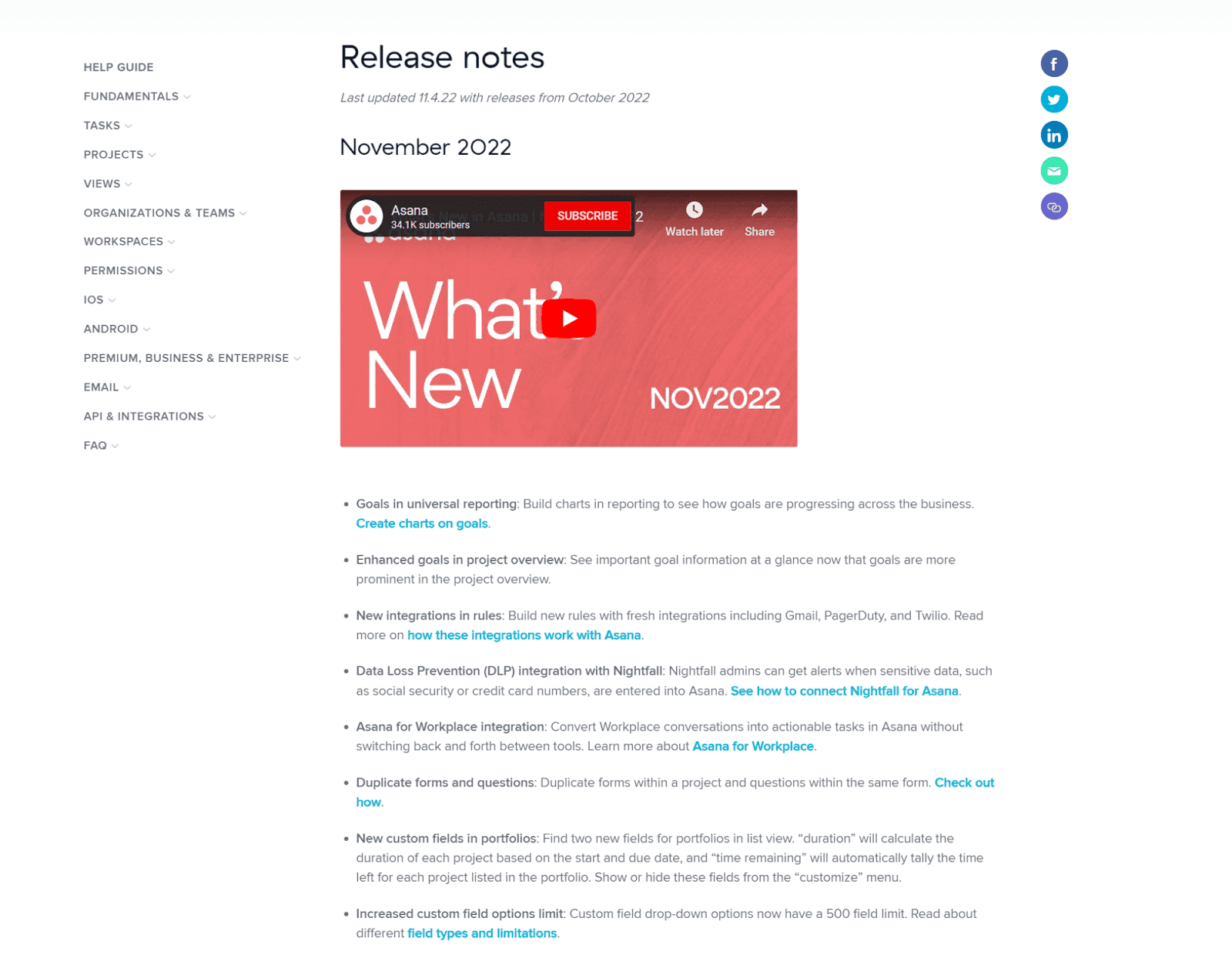
Source: Asana
Product release notes are mostly created for external use. In other words, they’re intended for the end-users who need to be informed about the development and changes of the product.
However, some companies also distribute internal product release notes intended for the team working on the product, not the product’s audience.
They look very similar to external release notes but can be structured less formally and include specific information team members will find useful, such as tasks completed thus far and those to be done in the future.
Here’s an example of an internal release note from Teamwork:
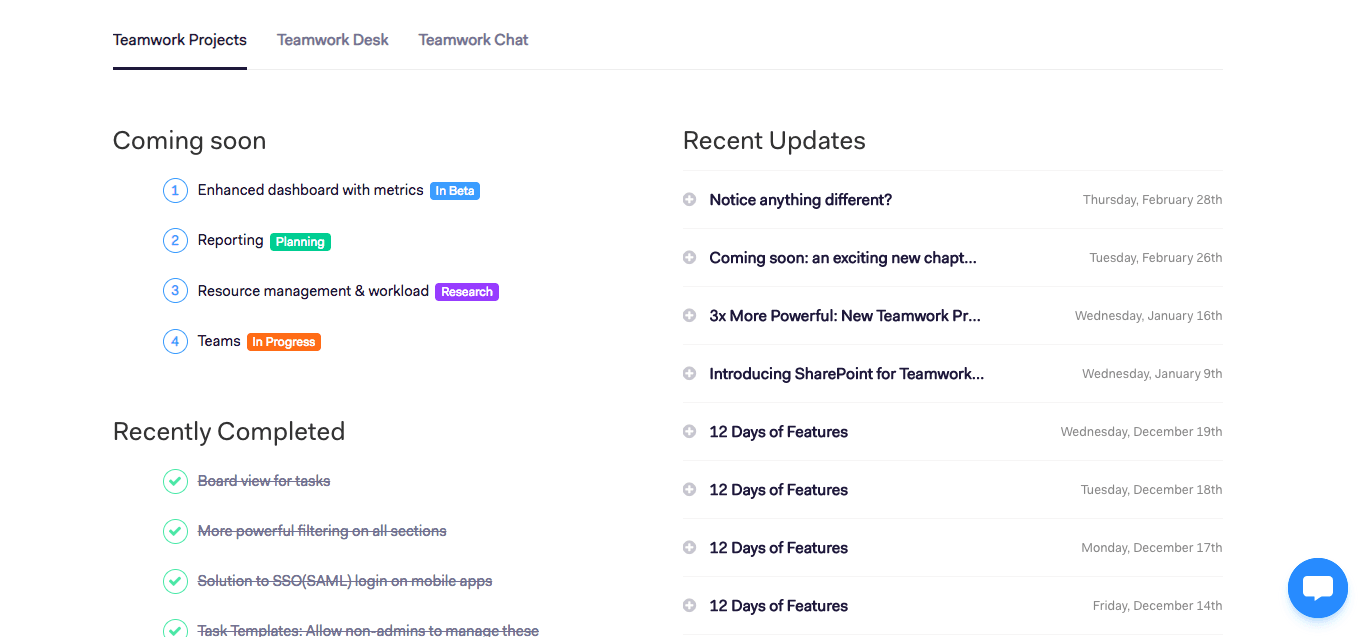
Source: Ameboids
This internal document can serve as a roadmap for the product and helps team members organize their work, so it’s a good idea to form a habit of sending it out with every new update.
All in all, product release notes are your way of informing customers (and team members) how your product is changing and what they can expect the next time they access it.
They’re documents that help you ensure your product is used to its full potential and that customers are kept happy.
Why Are Product Release Notes Important
We ended the previous section by saying that product release notes perform the important function of informing users about new products, features, and updates.
Because of this, release notes can be considered a tool for disseminating product knowledge and a way to educate users on proper product use.
This is important because customer education is strongly correlated with product adoption, the process by which customers become regular users of your product whom you’re likely to retain in the long term.
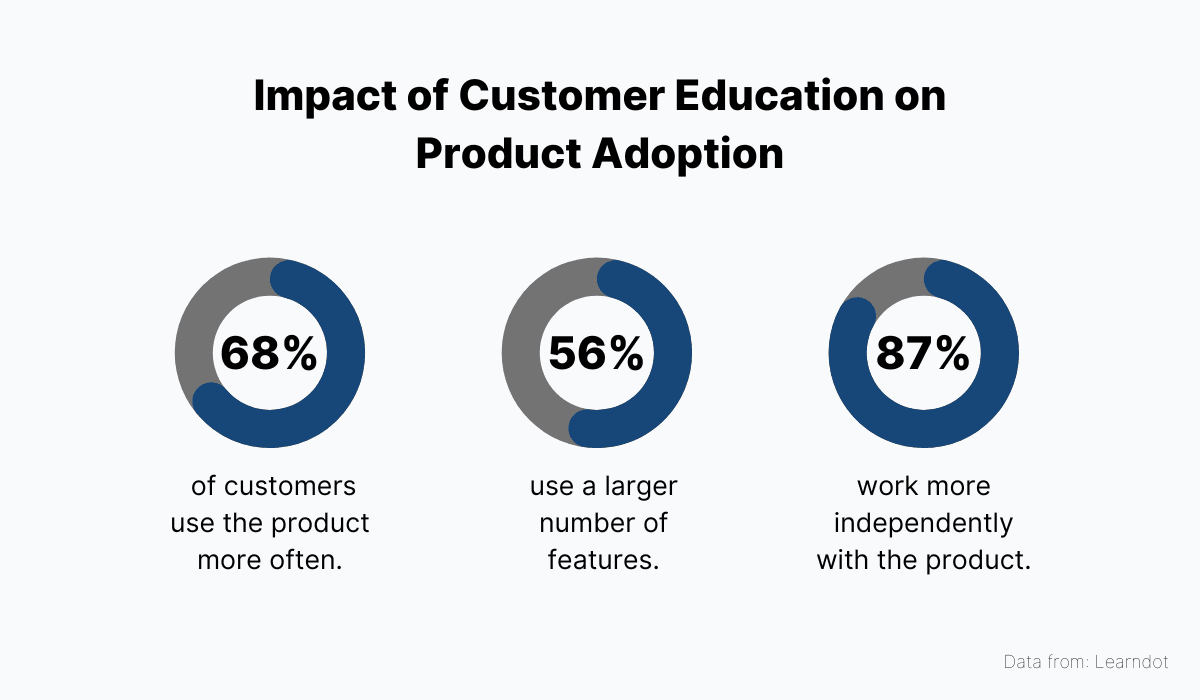
Source: Archbee
In addition to that, release notes can also help you engage your users and get them excited about the long-term development and expansion of your product.
For example, Buffer uses engaging copy and lively visuals to announce new features, which makes it much more likely users are going to feel excited about their updates and try them out right away.
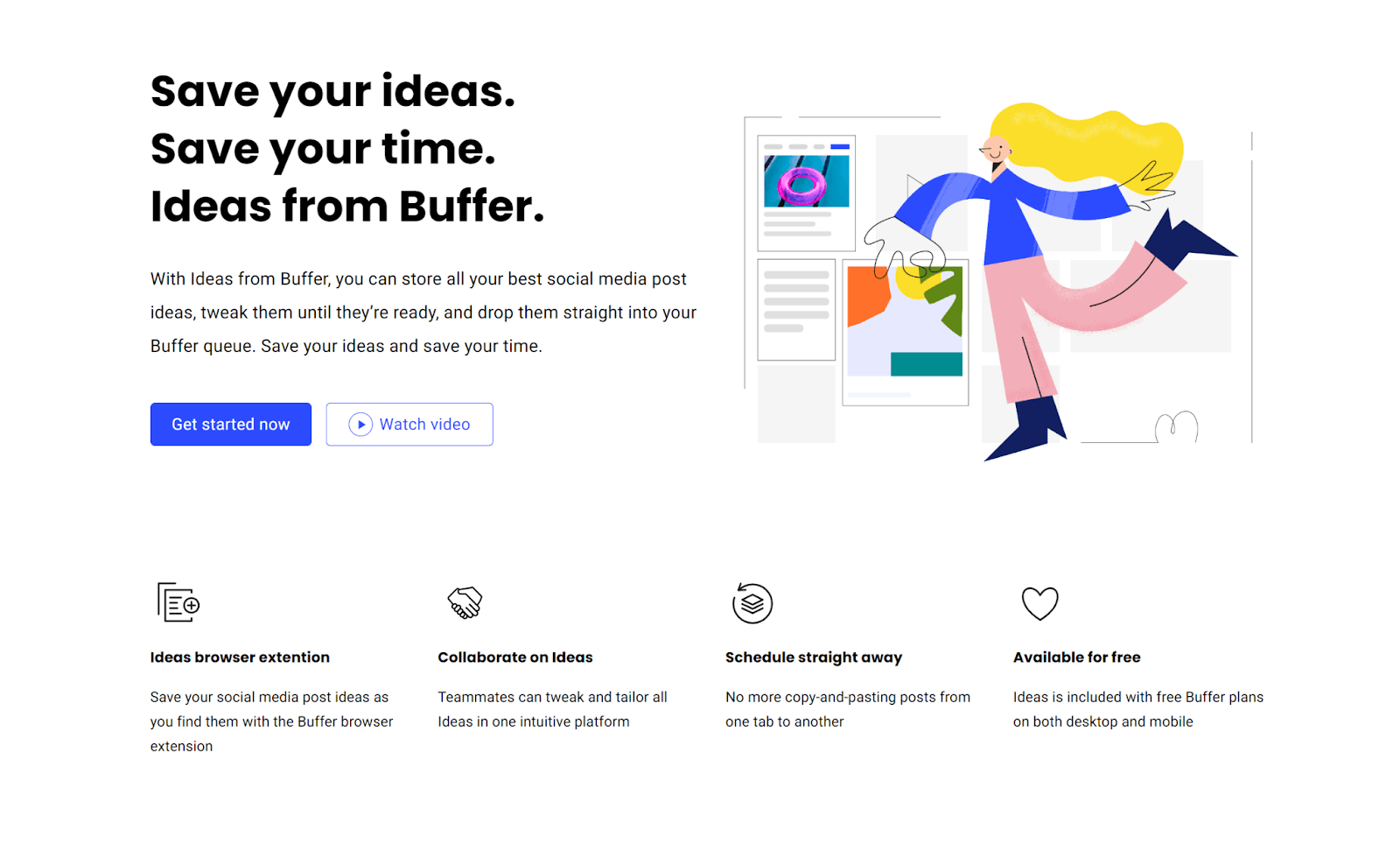
Source: Buffer
In other words, while user engagement isn’t the main purpose of release notes, this useful type of communication should give user engagement and satisfaction a good boost and play into your overall customer experience strategy.
Last but not least, and this is a fact that’s often overlooked, product release notes are a type of content.
That means they have marketing value on top of everything we already discussed in this section.
This is why SaaS companies go out of their way to get their release notes in front of as many eyes as possible.
Some dedicate a section of their website to displaying release notes so that visitors to the site can get a sense of how dynamic and active your company is when it comes to product development, while others share updates via email, as a part of their newsletter strategy.
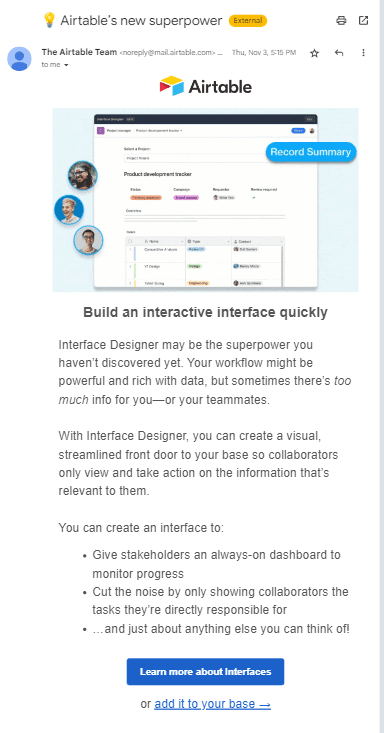
Source: Airtable
In this way, you have a chance to influence the purchasing decisions of people who have signed up for your newsletter but haven’t subscribed to your product yet.
You can also motivate lapsed or irregular users to come back to the product as your service has been improved since the last time they used it.
Long story short, product release notes play a crucial role in informing users about new developments, but they can also do wonders for your customer experience and marketing strategies.
They’re truly an important type of document for SaaS businesses.
Who Is Responsible for Writing Product Release Notes
The workflow for release notes will largely depend on the size of the company and the characteristics of the product.
So, for example, at startups consisting of just one or two people, the task will probably fall to the lead developer, as they are intimately familiar with the development of the code and which bugs are getting fixed.
In a bigger company with a more developed team, a good strategy might be to have product managers and technical writers collaborate on planning and executing release notes.
In this case, product managers can provide detailed insight into how the product is changing over time and how that fits into the overall product strategy.
On the other side of the equation, technical writers can turn this insight into a document that adequately conveys the benefits to users.
Other combinations can help you accentuate various aspects of the release and bring you closer to attaining the company’s business goals.
For instance, if your product is of a very technical nature and appeals to digital experts, like developers, then it might be a good idea to leave the release notes to the development team.
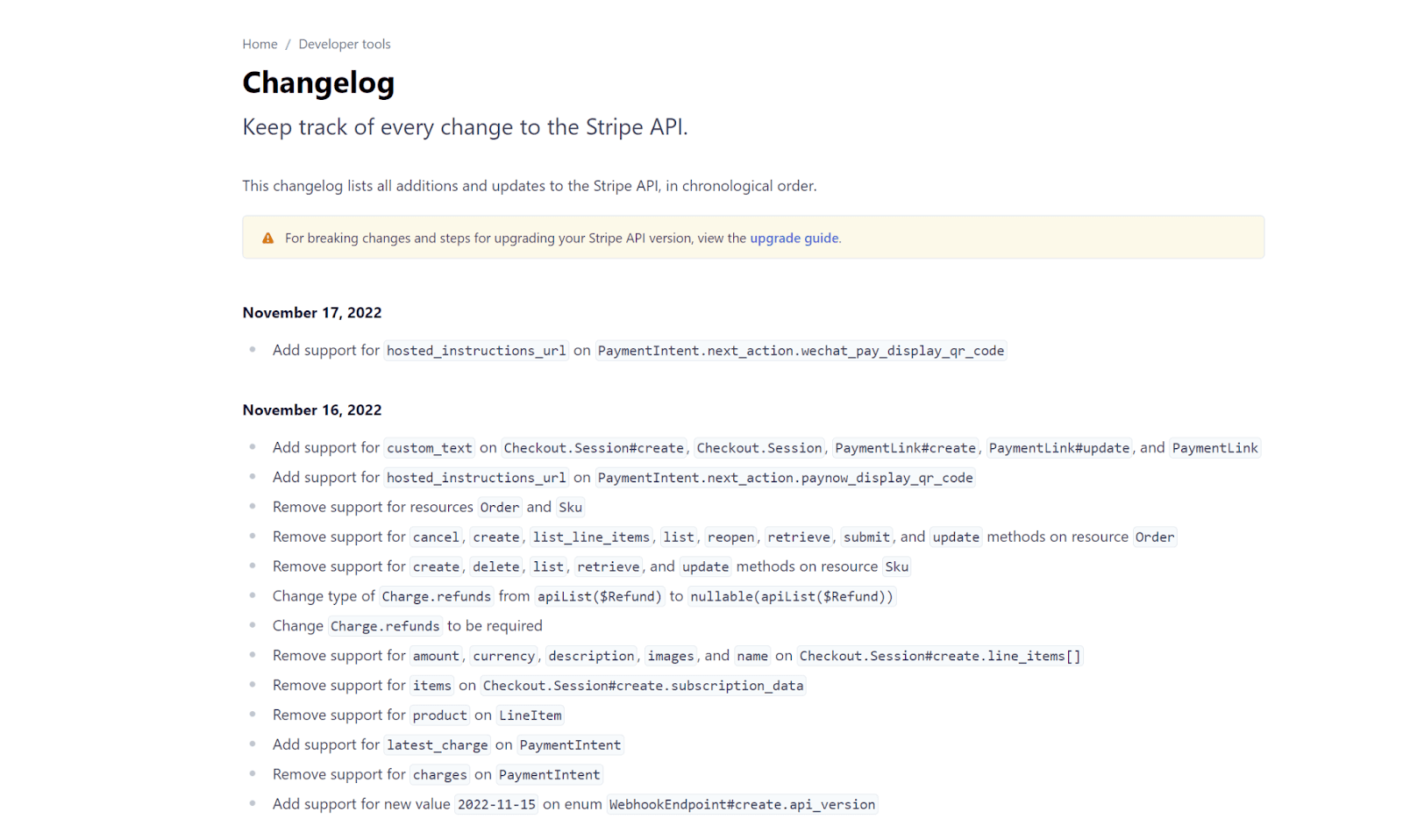
Source: Stripe
This should ensure high accuracy and essential information for this technical audience while saving time and resources on embellishments and extra information that’s simply not needed here.
On the other hand, if you’re addressing a wider audience that might need more explanation and some light motivation to implement the update into their routine, then it’s a good idea to have the marketing team work their magic on the document.
Marketing can infuse the note with some attractive copy that explains the changes and potential benefits so that they’re clear to users and also add visuals, videos, gifs, or other resources to capture attention and provide an extra layer of explanation.
Miro is a great example to follow here.
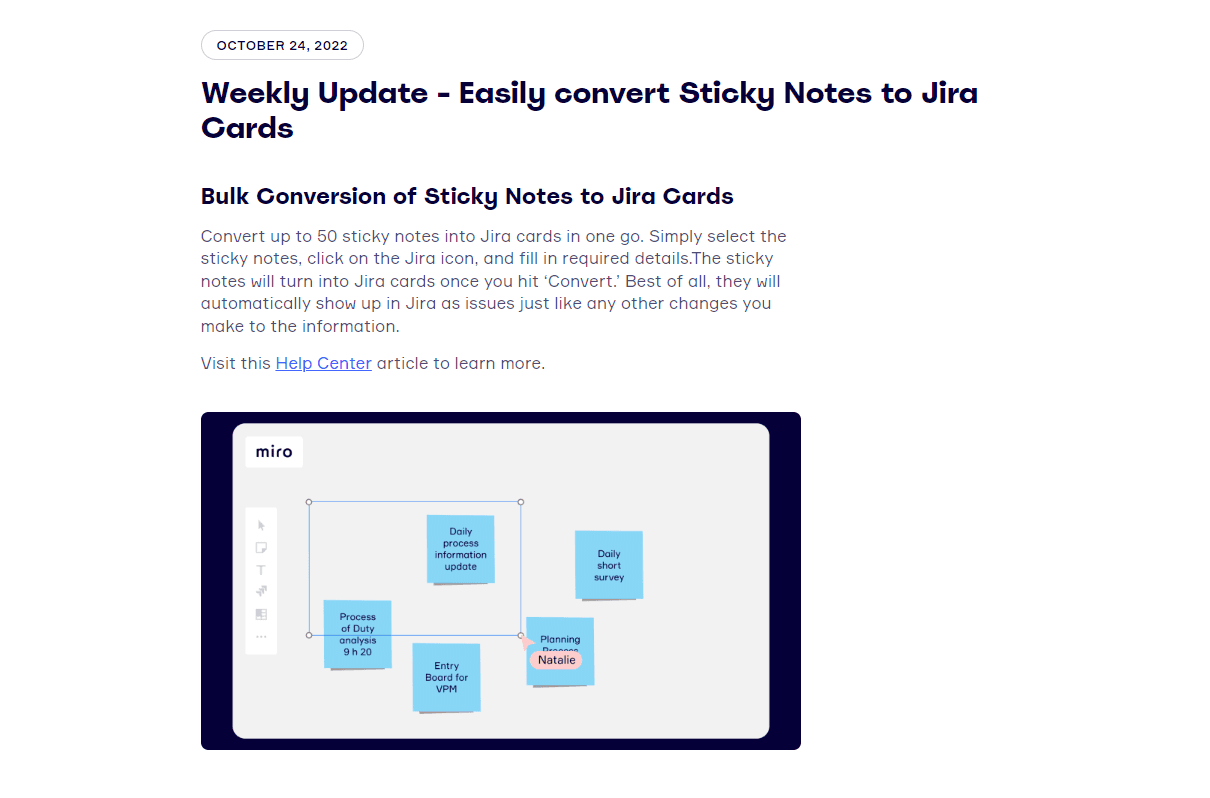
Source: Miro
So, to sum up, there really is no singular answer to who should be writing release notes at your company.
It all depends on what you want your release notes to accomplish and the human resources you have available.
What Should Product Release Notes Include
Reading this article, you may have noticed that we’ve used examples of product release notes that look nothing alike.
That’s no accident. As we said before, quality release notes are always aligned with the nature of the product, the characteristics of the audience, and the overall goals of the business.
As a result, there’s no set format for release notes, and SaaS companies across the board have their own ways of writing them.
That being said, there are some elements that make product release notes recognizable and that are, therefore, commonly found in this type of document.
For one, almost any release note has a header or title that often contains an identifier for the build and version of the product.
That’s the case with ClickUp. Their release notes are marked with a number to make it easier to keep track of them, since they are published multiple times a month.
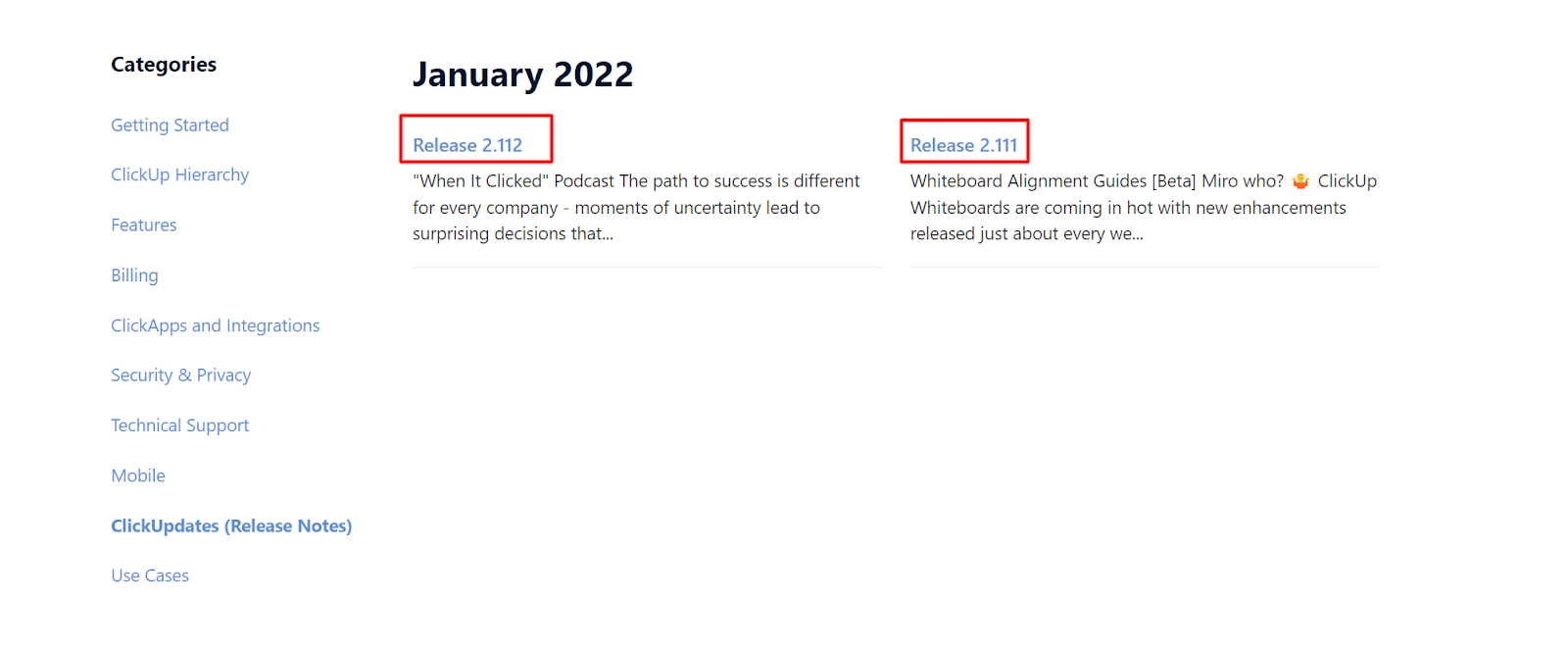
Source: ClickUp
Alternatively, notes can carry descriptive titles that summarize what’s changed and how users can benefit from the updates.

Source: Slack
Almost any release note will also have some kind of description to go into more detail about what has changed.
Some will keep it brief and to the point, while others will include explanations as to how this change will positively affect product use and advance the customer’s experience with the product.
For example, note how Hubspot release notes include the “what, why, and how” behind their updates to help users quickly understand how the change affects them.
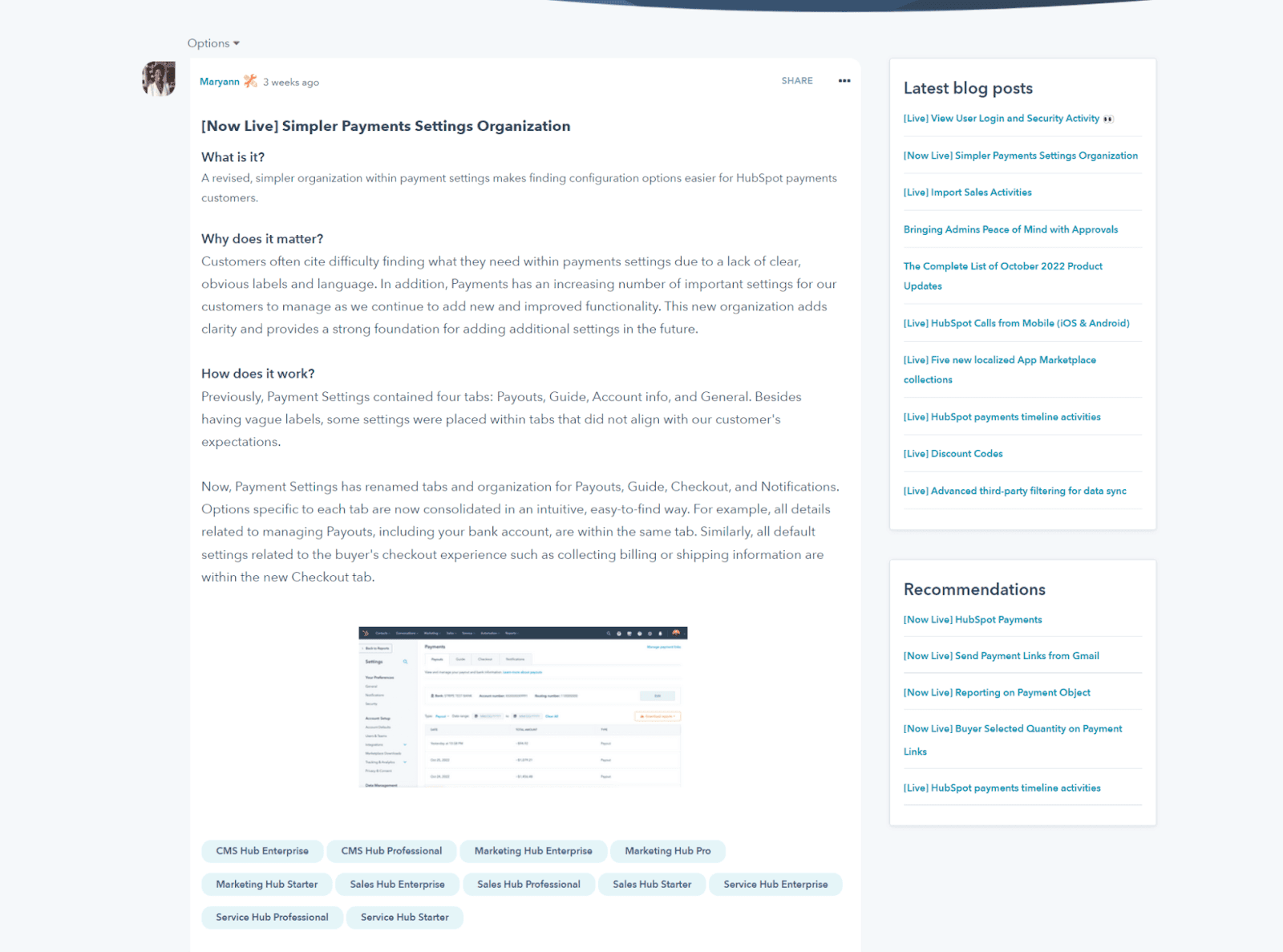
Source: Hubspot
This description may also contain a set of instructions that teach users how to use the feature that’s being introduced so that users don’t have to fiddle around on their own and can implement the update as soon as possible.
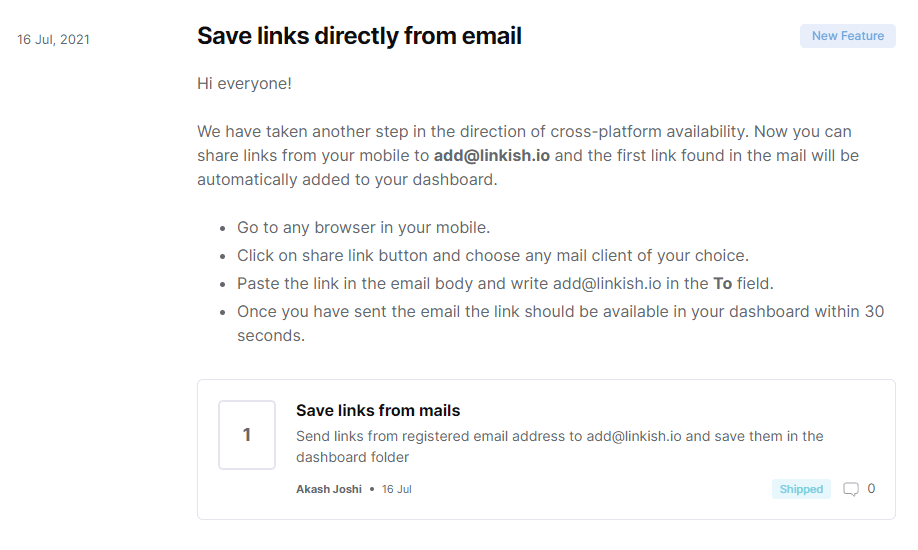
Source: Frill
Finally, since product updates are often made to eliminate bugs, errors, and elements that are detrimental to the user experience, you’ll often find a section on bug fixes in a release note.
Slack is once again exemplary here because its notes use simple, descriptive language so that users can easily understand which bugs will no longer bother them as they work.
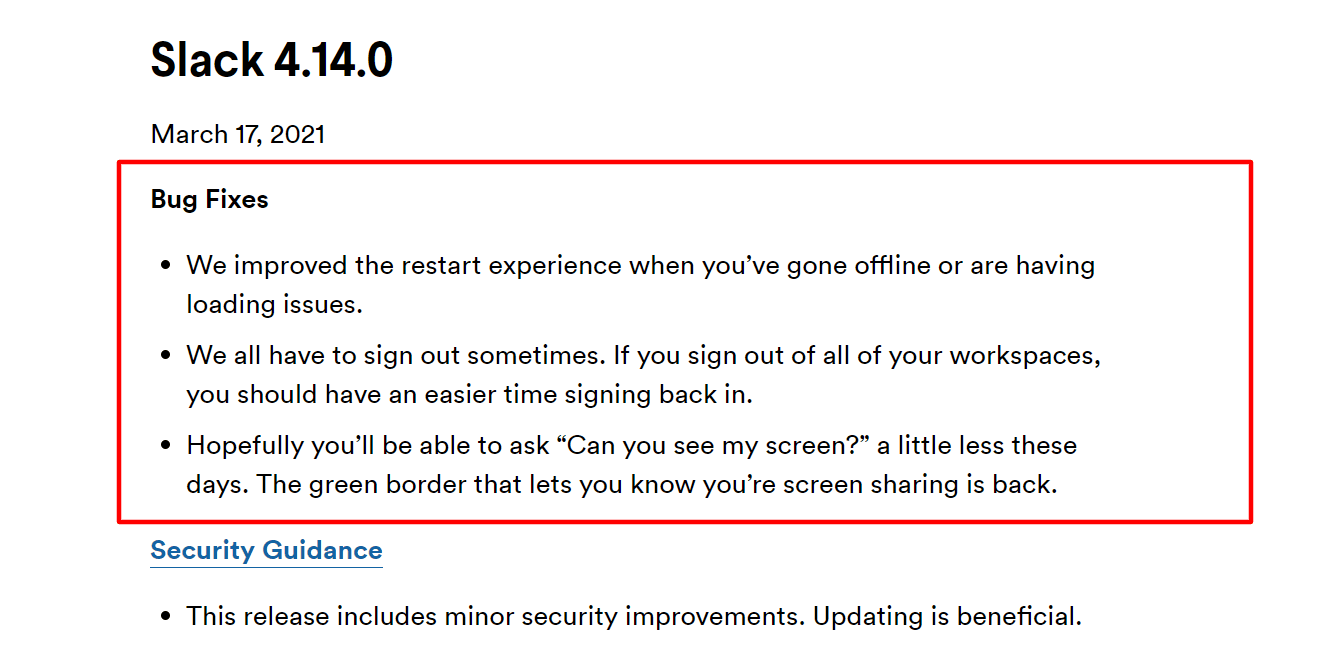
Source: Slack
Product release notes can contain a variety of elements that explain and describe changes to the product.
How you arrange these and which ones you decide to prioritize is up to you—just remember to keep them informative and inspiring for your users.
How Can Product Release Notes Be Distributed
To ensure maximum reach, SaaS companies distribute product release notes on the channels they already use to interact with their user base for marketing, sales, and customer support purposes.
For example, it’s very common for release notes to be delivered via email because they can easily align with a company’s strategy to keep educating users about the product.
Here’s an example from Grammarly:
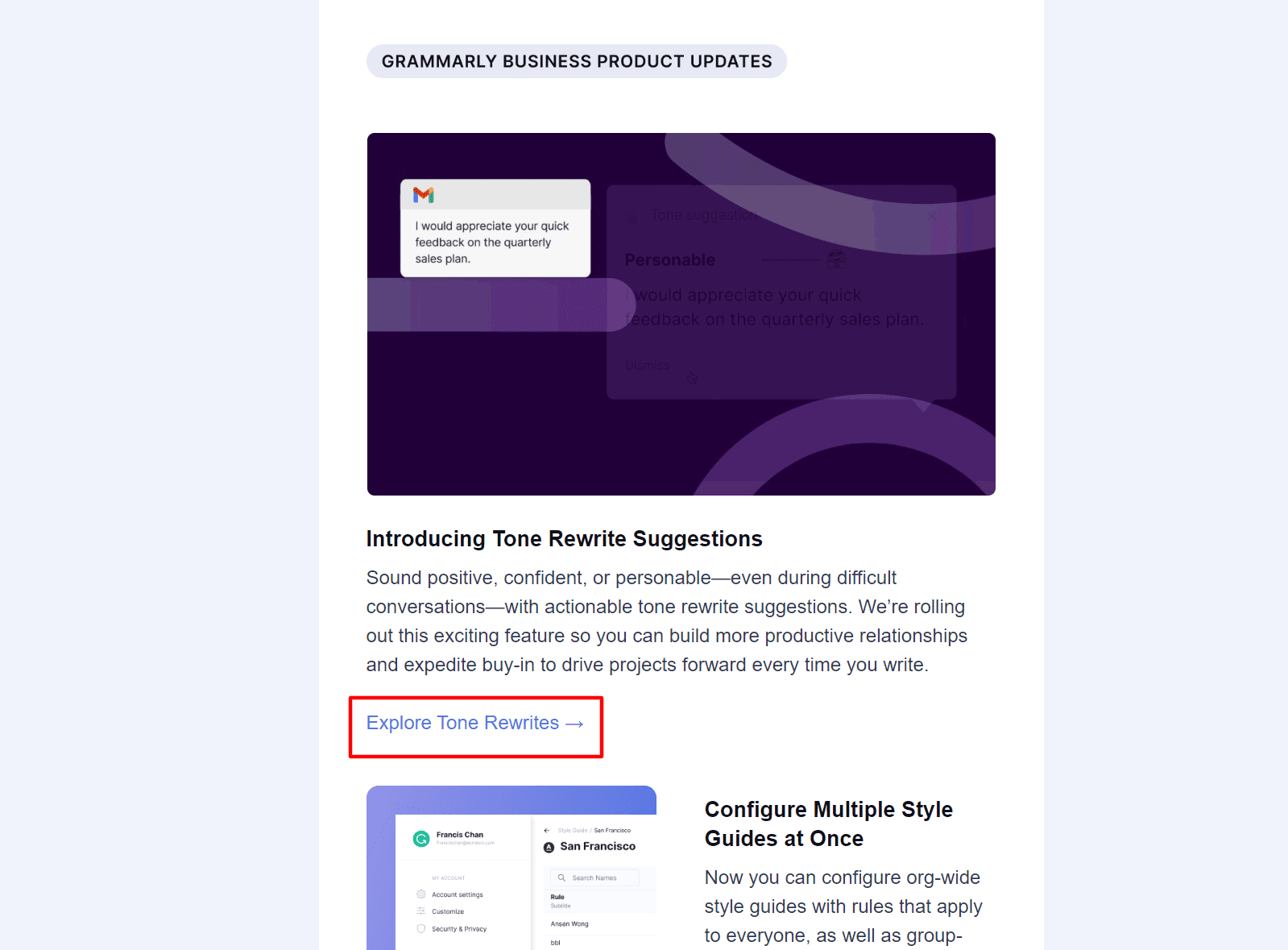
Source: Grammarly
Note that this message contains a CTA link that will transport the user to the new feature so they can try it out right away.
That’s a great practice to follow if you want the features you’re announcing to get traction.
Of course, corporate emails don’t get a 100% open rate, and there will always be users who unsubscribe from your email campaigns, so another good way to reach them could be to publish release notes on your website.
Many companies keep an easily accessible changelog on their sites for precisely this reason.
A changelog or updates page is handy because you can display your release notes chronologically, providing an overview of how the product has changed and evolved over time.
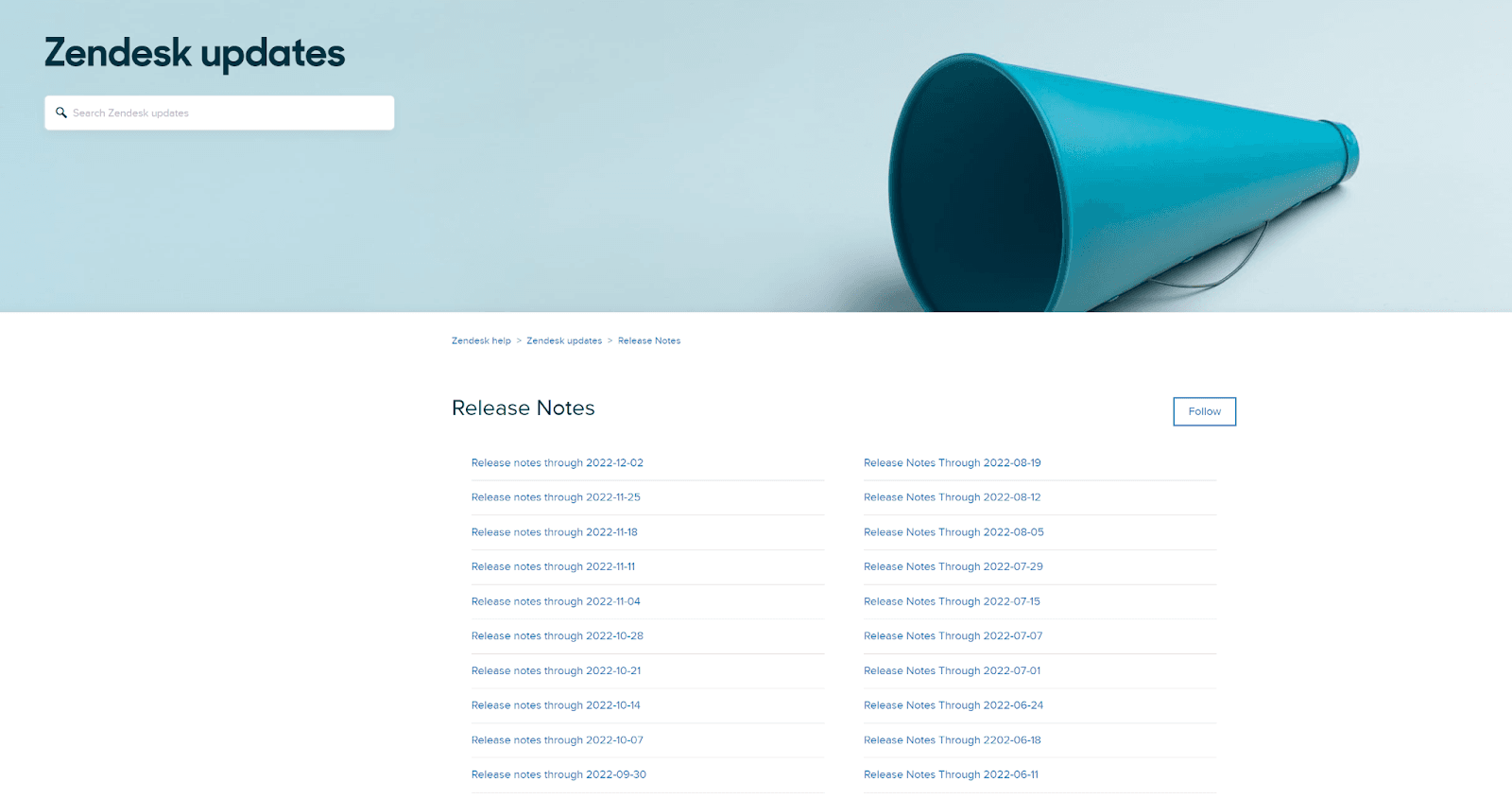
Source: Zendesk
Another advantage here is that you can publish new release notes as often as you see fit and revise them as needed without spamming your users’ inboxes.
Similarly, release notes can have their own section in your product knowledge base.
That’s a very logical distribution channel because your release notes are essentially educational documents that help users become proficient with your software.
They have that in common with all the other articles in your knowledge base.
For example, Segmind has placed its changelog within its Python Library section, which makes sense because this resource is of great use to developer users of the product who need to keep track of bugs and changes to the code.
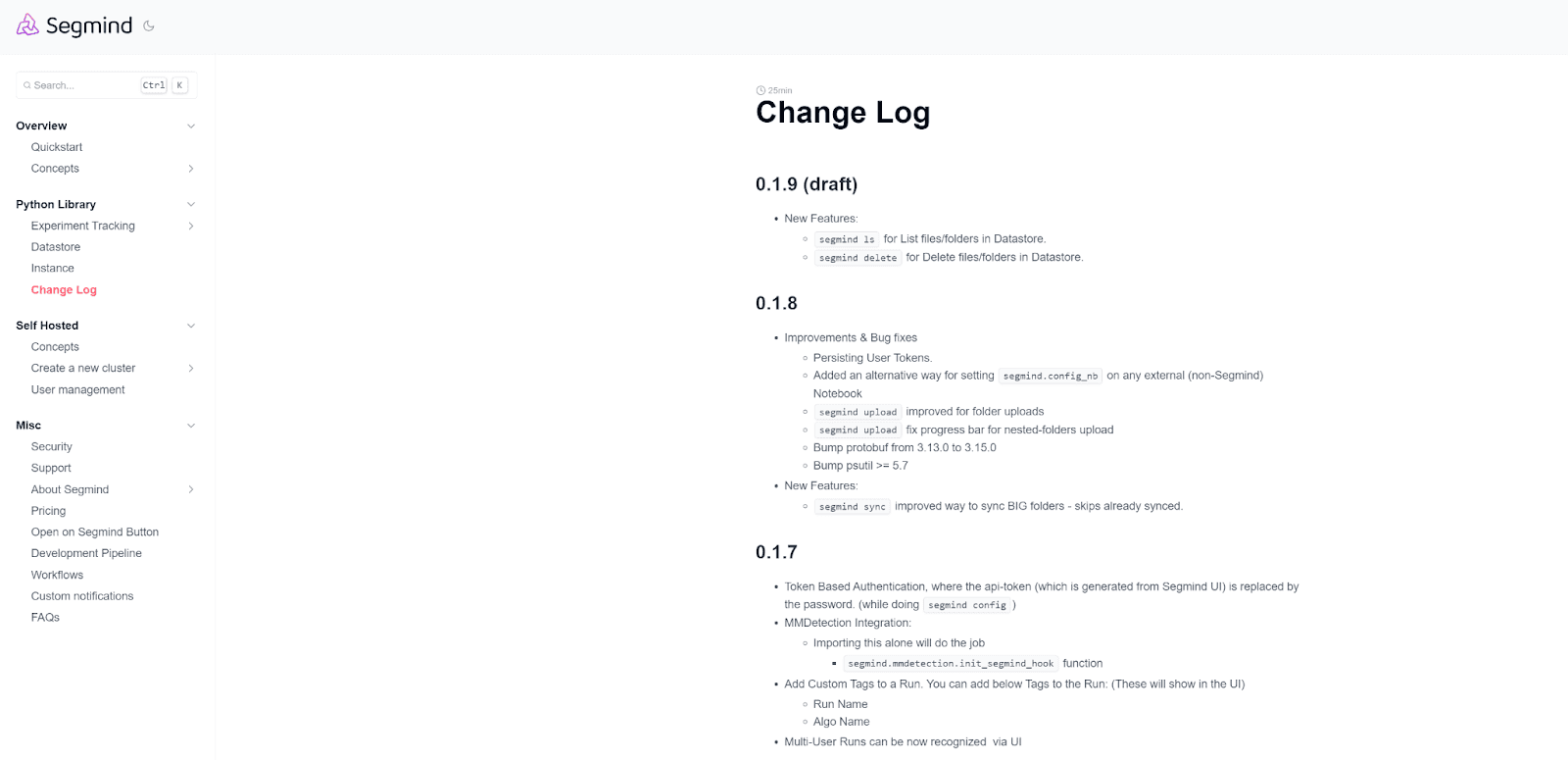
Source: Segmind
One more reason why release notes fit well here is that knowledge bases for software are created using documentation software which has input capabilities that allow users to include useful resources in every release note.
Our own documentation software, Archbee, for instance, enables release note authors to add live code that can be instantly copied and implemented, as well as diagrams, multimedia, and all kinds of other resources that help users get their message across.
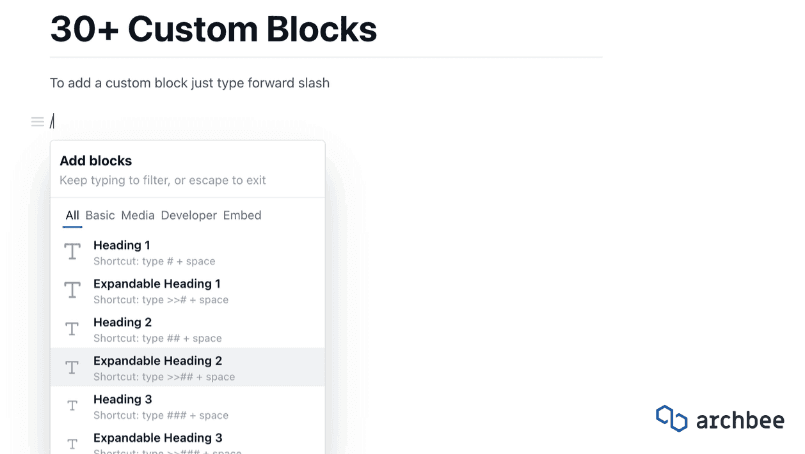
Source: Archbee
All of these methods are equally valid, but they work best when used in combination.
That way, your release notes are able to reach casual visitors to your website, potential customers who follow your email campaigns, and advanced users who use your knowledge base as an educational resource to expand their use of your software.
Conclusion
We hope this guide to SaaS product release notes was able to shed light on just how versatile, engaging, and informative this humble type of technical documentation can be.
Release notes have the power to make your existing customers happier with your service, and also to attract new or lapsed users to the product and all it offers.
If you haven’t been paying enough attention to this type of document until now, use the good practices and examples from notable companies we’ve discussed here to create and share better product release notes for the benefit of your users.
Archbee is an industry-leading tool for creating, managing and sharing release notes. Try Archbee's full range of features with our free 14-day trial.
Frequently Asked Questions
Product release notes are short, purposeful updates that explain what changed in your software, why it changed, and how it benefits users. They’re a form of technical documentation most often written for customers, covering new features, improvements, and bug fixes, with links or steps to help people try updates right away. While usually external, some teams also create internal release notes as a lightweight roadmap for colleagues (e.g., what shipped, what’s next). There’s no single format—great notes are clear, concise, and tailored to your audience.



